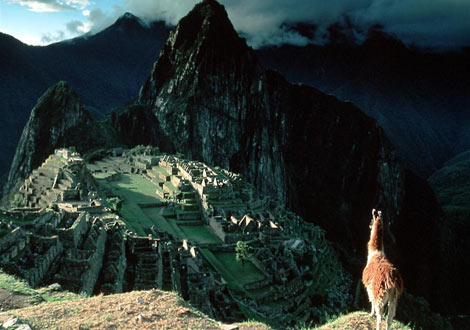Peru, South America
South American coffee is overshadowed by the presence of coffee giant Brazil and Colombia, the largest exporter of washed Arabica beans, but Peru, South America's third-largest coffee producer after Brazil and Colombia, is worth mentioning.

Peruvian coffee is grown mainly on the slopes of the northeastern part of the forested Andes. It is mainly divided into three major producing areas: Cajamaka, San Martin and Amazon in the north, 27% in the Mayo Valley in the middle, and 23% in the south (Ayacucho, Puno and Cusco provinces). 95% of Peruvian coffee production is grown on a small scale by farmers. About 110000 people in the country are engaged in coffee cultivation, with each household owning two or three hectares of land. The process from planting to peeling is done by itself and sold to raw bean merchants.
Excellent Peruvian coffee grows at high altitudes in the Andes, reaching as high as 2000 meters. The topography of such a high altitude makes Peruvian coffee unique: bright style like the sunshine of the plateau, fresh and sour fruit in the mouth, soft and round sweetness, and a moderate mellowness that gives a mild and unburdened taste, Peruvian coffee creates another South American style that Brazil and Colombia do not have.

(alpaca, a unique animal on the Peruvian plateau)
Coffee cultivation in Peru began in the early 18th century, and 200 years later, there are still many traditional typica tree species, accounting for 60% of exports. However, compared with other countries, the country has done little in the international marketing of coffee, and lacks a sound production and sales management system at home, so Peruvian coffee is still not well-known in the world, and it is difficult to find it in famous coffee. However, Peru's organic coffee industry has developed significantly in recent years, and through organic certification and fair trade activities, the country's coffee has gradually begun to enter the international stage. Coffee is the country's largest export of agricultural products, accounting for 50% of agricultural exports, but only 2.9% of total exports. In recent years, as a substitute for coca production, coffee has been increasingly supported by the government.
(panoramic view of the ancient city of Cusco)
Apart from coffee, Peru is better known for its lost Inca city of Machu Picchu and Nazca lines. The ancient city of Machu Picchu contains the Inca civilization of thousands of years ago, and NASCAR is a mystery that is difficult to solve. These are the unique symbols of this South American plateau country to the world. What about coffee? Although the road of development is bumpy, it is believed that there are hard-working Inca remnants, the grace of the Andes, the unique climate of tropical mountains, and the original excellent varieties and organic mode of production. Peruvian coffee will one day step onto the stage of world boutique coffee, showing the world its unique aroma.
Important Notice :
前街咖啡 FrontStreet Coffee has moved to new addredd:
FrontStreet Coffee Address: 315,Donghua East Road,GuangZhou
Tel:020 38364473
- Prev

Get to know Ecuadorian coffee
You may know the name of Ecuador because of football, because of the reputation of the country of bananas, or because of the rare animals and plants of the Galapagos Islands. Indeed, Ecuador, a South American country, has a long history, rich products, beautiful landscapes, strange species, and the Galapagos Islands are rich in sea turtles and lizards.
- Next

Indonesian coffee
Although the main coffee producing areas of the world are in Africa and Latin America, the coffee development in Asia in recent years is very remarkable. The outstanding performance is that the coffee production of Vietnam and Indonesia ranks second and fourth in the world respectively. Indonesian coffee attracts more attention than Vietnam, which grows coffee in Guang Zhi Robusta. Let's put aside history and politics for the time being. Let's just start with coffee.
Related
- What documents do you need to go through to open a coffee shop? coffee shop coffee shop certificate processing process
- How to purchase Coffee beans in small Cafe how to choose a suitable supplier for domestic Coffee supply Company
- How to drink Starbucks Fragrance White Coffee? how to make Australian White Coffee? what Italian coffee beans are recommended?
- The Story of Flora Coffee: the name of Flora Coffee Bean and the implication of the Flowers on Florna Coffee
- How much does a cup of coffee cost? How much is the profit of a cup of coffee? What is the profit of the coffee shop in a year?
- Yunnan small Coffee, known as "fragrant Coffee", introduces the characteristics of Alpine Arabica Coffee producing areas in Yunnan, China
- 2023 latest Starbucks full menu price list how much is a cup of Starbucks coffee what is better to drink the most popular hot and cold drinks recommended
- Starbucks different kinds of Coffee Price list Starbucks menu 2023 Top Ten Best drinks in Starbucks
- Starbucks Spring praise Comprehensive matching Coffee Bean theme Story Packaging implication and taste description
- The cost of a cup of coffee latte American coffee cost price and selling price

